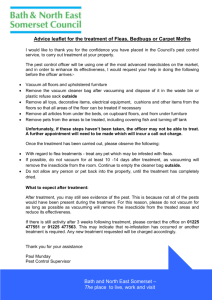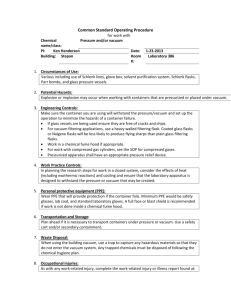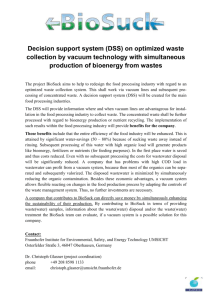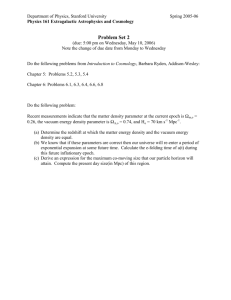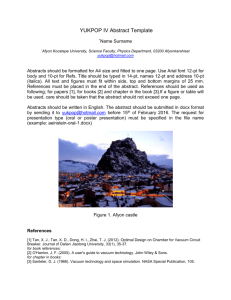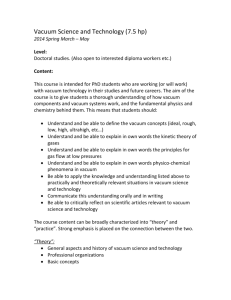What's in the Bag? - Tornado Industries
advertisement
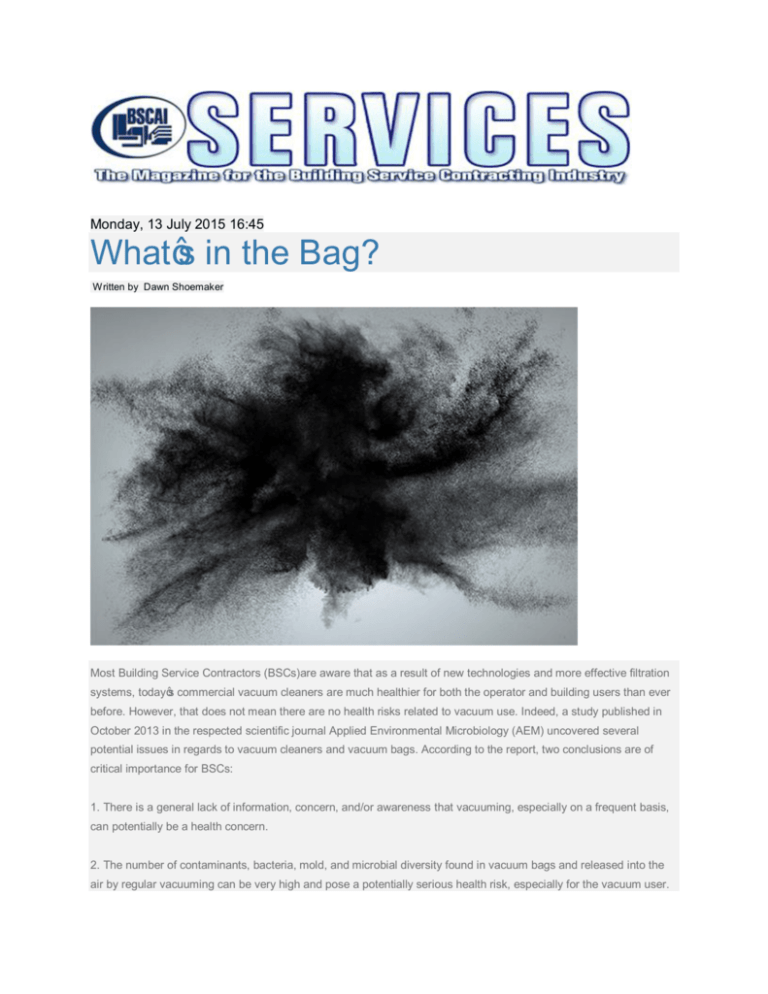
Monday, 13 July 2015 16:45 What’s in the Bag? Written by Dawn Shoemaker Most Building Service Contractors (BSCs)are aware that as a result of new technologies and more effective filtration systems, today’s commercial vacuum cleaners are much healthier for both the operator and building users than ever before. However, that does not mean there are no health risks related to vacuum use. Indeed, a study published in October 2013 in the respected scientific journal Applied Environmental Microbiology (AEM) uncovered several potential issues in regards to vacuum cleaners and vacuum bags. According to the report, two conclusions are of critical importance for BSCs: 1. There is a general lack of information, concern, and/or awareness that vacuuming, especially on a frequent basis, can potentially be a health concern. 2. The number of contaminants, bacteria, mold, and microbial diversity found in vacuum bags and released into the air by regular vacuuming can be very high and pose a potentially serious health risk, especially for the vacuum user. According to the report, one of the first studies regarding vacuuming and vacuum cleaner bags was undertaken in the 1950s and published in the medical journal Lancet. It found the possibility that vacuum cleansers can contribute to serious health concerns. This study was prompted by an outbreak of Salmonella infections among infants in a hospital ward. The authors of this early study found that “the sole source of the infectious agent was the dust bag of the vacuum [in this case] of a floor polisher.” The AEM study also pointed out that the 1950s study was one of only a very few studies conducted on the potential health impacts of vacuuming and vacuum cleaner bags, which is likely one reason there is such a lack of information and concern about this issue. Commercial cleaning contractors should be concerned about the findings of these studies, and more importantly, with this information in hand, BSCs should closely examine what they can and should do protect their own health as well as the health of their clients. What was uncovered? The 2013 AEM study involved 21 vacuum cleaners belonging to staff and students at the Queensland University of Technology, a public research university located in Australia. Three of the vacuum cleaners were specifically designed for professional use and ranged in priced from $75 to $800 (AUD). It is important to note, as we will discuss later, that the vacuum cleaners also ranged in age from six months to 22 years old. Each vacuum cleaner was switched on and off for 10 to 15 minutes for testing of the vacuum bags, and they were also assessed after a cold start—when the vacuum cleaner had not been used previously—as well as warm start, after the vacuum cleaner had been used. Dust collected in the bags was sieved, and samples were collected. Additionally, using a variety of testing methods, airborne emissions were sampled with the goal of determining what was in the dust released by these vacuum cleaners and whether or not the conetnt of that dust coincided with what was found in the vacuum bags. Among the findings were the following: • Clostridium botulinum (a type of bacteria) and antibiotic resistance genes were detected in each sample. • The used vacuum bags were found to be a reservoir of bacteria, molds, endotoxins, and allergens. • The dust emissions during vacuuming can potentially spread Salmonella and other bacteria. • Emission of bacteria and molds (Penicillium/Aspergillus) were detected. • There is a potential for appreciable quantities of molds and human-associated bacteria to become airborne as bioaerosals, which provides a potential source of danger to humans. Bioaerosols are extremely small living organisms or fragments of living things suspended in the air. These include such things as dust mites, molds, fungi, spores, pollen, bacteria, viruses, amoebas, fragments of plant materials, as well as human and pet dander. These particles are so small they cannot be seen or detected without a poweful magnifying glass or microscope. Panic or prepare As to the findings of the study, there appears to be little to dispute. However, there are some “red flags” cleaning professionals should be aware of when evaluating the results of this study. For example, many of the items found in the vacuum bags and released into the air are already present in the air and surrounding environment. Their presence alone is not necessarily reason to be concerned. What we should know is that we can take steps to minimize the release of these impurities from vacuum cleaners, protect our health, and make sure the filter bag is disposed of properly. In a sense, it’s like filling a car with gasoline: gas fumes are released into the air, so we just need to use sufficient care—and common sense—to protect ourselves and others from these fumes. Additionally, according to Doug Berjer, a professional cleaning industry veteran who currently works for Tornado, one concern he has with the study is the fact that at least one of the vacuum cleaners was 22 years old. “Not only was the technology to help protect indoor air quality limited 22 years ago, the older a vacuum cleaner becomes, the more likely it will release impurities through the casing, hoses, and filter bags.” He also notes that some of the vacuum cleaners tested were relatively inexpensive and only three were designed for professional use. “Less expensive vacuum cleaners and household vacuum cleaners are typically not designed to be as effective at capturing airborne emissions.” Unfortunately, the study provided few suggestions for cleaning professionals to help protect themselves from potentially contaminated emissions other than to use “high-quality vacuum cleaners and bags…in order to reduce indoor allergen exposure.” While this is certainly an important practice, Berjer offers a collection of additional ways that cleaning professionals can use to protect their health and the health of building users when vacuuming: • Consider replacing a vacuum cleaner after 3 to 5 years of use. • Only select vacuum cleaners made for professional use. • If purchasing a re-conditioned vacuum cleaner, do so directly from the manufacturer of the machine, since “They will have the parts and best be able to ensure the machine meets originally manufactured specifications if possible.” • Only select vacuum cleaners with multi-level filtration systems, including a HEPA filter cartridge. • Look for machines that are true HEPA, meaning the casing and connections of the machine are sealed to prevent contaminants from being released. • Clean or replace the HEPA filter on a set schedule. One easy way to remember this is to use the start and end of Daylight Savings Time as your signal to do so. • Always use the right-sized vacuum filter bags designed for the machine. It’s also best not to select “generic” filter bags, but to select filter bags provided by the manufacturer. • If the vacuum cleaner appears to be working poorly, stop work and see what the issue is. If the problem cannot be corrected, select another vacuum cleaner. In the end, a large part of vacuum safety boils down to having a sense of basic care and respect for your equipment: “We all know vacuum cleaners can get a bit abused when used regularly in professional cleaning,” adds Berjer. “Cleaning professionals should try to be more respectful of their machines. The more careful they are, the longer the machine will last and the healthier it will be to use.” Dawn Shoemaker is a frequent writer for the professional cleaning industry.

